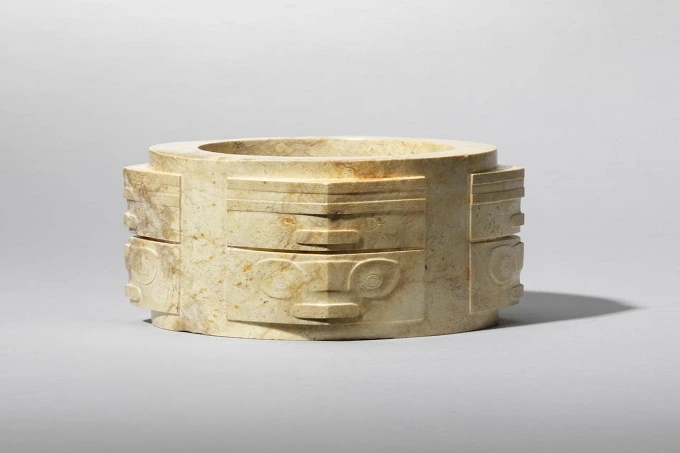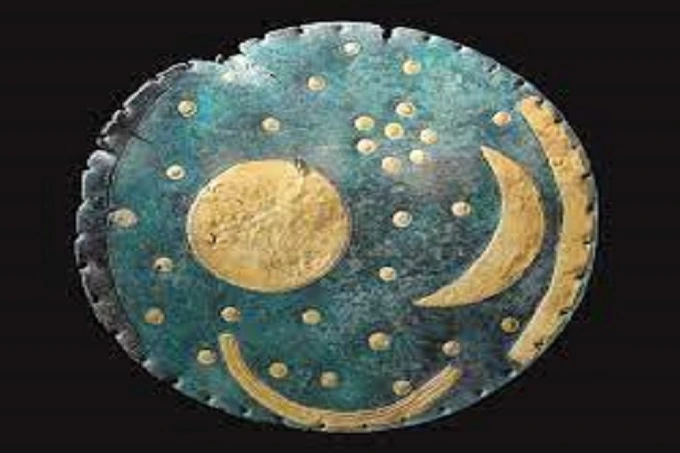We used to believe that people in ancient times were not very intelligent or talented and continued to use the same things for generations without discovering anything new. However, by diving into history, you’ll realize how exceptionally intelligent our ancestors were. This is because everything commonplace for us today was something that our ancestors had to invent from scratch, having absolutely no theoretical basis.
And on occasion, they produced things so complicated or helpful that even an educated person living in the present era would exclaim, “Wow!” The following are some amazing artifacts from the ancient world that have made it down through the ages to the modern-day.
Jade Cong

Most of the ceremonial artifacts created by the various cultures across the world have been lost over time. The Neolithic Liangzhu civilization of roughly XXXIII-XXII centuries B.C. is responsible for creating one of the most incredible artifacts, a Jade Cong.
Researchers working in the province of Jiangsu in China have uncovered several objects with a square outline on the outside but a round inside. It is unclear what their purpose is, but the fact that they were manufactured is amazing. The fact that they are composed of nephrite, a material that is famously difficult to work with, is the primary reason they could not be split using the readily available tools.
In order for its makers to construct such an artifact, they needed to process the stone with hard abrasive sand. This required not only creative methods but also something that resembled a sandblaster.
Antikythera mechanism
Scientists and regular people were shocked when they saw this artifact because it was not something that would have existed in the ancient world. The Antikythera mechanism was discovered at the beginning of the 20th century when it was hoisted from the bottom of the sea off the coast of the Greek island of Antikythera along with other shipwrecks. Because it had been lying on the ocean floor for a couple of millennia, proponents of the conspiracy theory began to argue that such an artefact could not have been manufactured in those days and that it was instead a piece of a UFO that had crashed into the ocean.
Others believed that it was a component of the machinery found on Atlantis. There isn’t nearly as much mysticism here as there is a wonder. The Antikythera mechanism can be thought of as an ancient version of a computer. It is speculated that this device functioned in a manner analogous to that of an astronomical calculator. Research conducted using C.T. scans and X-rays has shown that the mechanism was used to track the movements of the Sun, Moon, and planets, all of which had already been discovered by the Greeks by that time.
A dial on the mechanism’s backtracked lunar and solar eclipses and inscriptions on the mechanism themselves marked the dates of the rising and setting of some stars. Even though mysticism is mentioned, it isn’t easy to believe that people living in that era could have created something like this.
Sword of Goujian
The straight Chinese Jian sword was discovered in 1965, and its age is estimated to be between 2,000 and 2,500 years old. It might look like a simple weapon at first glance, but a closer examination reveals that it was manufactured with high technological sophistication. To begin, the sword blade showed no signs of rust despite the passage of 2,500 years. It was surprising to learn this, given the time’s relatively primitive state of metallurgy.
The bronze had a high copper content but a low iron and lead content, and the tin were used to make the edges of the artifact, according to the findings of the researchers. Because of this, it was able to be preserved in such pristine condition. In addition, the edge of the sword remained sharp, and it was of such high quality that a researcher who made the mistake of touching the blade accidentally suffered a severe cut that resulted in blood loss. Furthermore, it was discovered that the sword could easily cut through a stack of twenty sheets of paper.
Nebra sky disc
Another artifact for amazing views, along with the Antikythera mechanism. A bronze disc with a diameter of 30 centimetres and a weight of 2.2 kilograms, the disc of the sky from Nebra is patinated and features gold inlays depicting the sun, moon, and 32 stars. The disc measures 30 centimetres in diameter. It was created by people who belonged to the Central European Únětice culture, which flourished around the 17th century B.C.
It is the first portable device that can measure the angle between the points of sunrise and sunset during the solstices, making it a true one-of-a-kind artefact in its own right. The disk’s arcs describe 82 degrees, indicating the angle between the summer and winter solstice sunset positions at Nebra’s latitude (51 degrees north latitude).
Initially, this artefact was fake because it seemed like it would be extremely difficult for scientists to create it in the 17th century B.C. Still, detailed analysis proved that it was authentic.
Rosetta Stone
People today are accustomed to using online translators, and as a result, even individuals who are not fluent in English can read news from Western sources with relative ease. However, people living in ancient times could only dream of something like this, and the process of translating one language into another took a very long time. Even a century ago, it really was a challenge.
The significance of the Rosetta Stone, which was the first “translator” ever used by humans, cannot be overstated. To give it a more accurate description, it is a slab with the edict of King Ptolemy V, who ruled from 204 to 181 BC. His decree is written in ancient Greek, Egyptian Demotic (the language most Egyptians speak), and hieroglyphics from ancient Egypt. Why is it written in Greek? Alexander the Great’s contribution to history and culture.
To the average person, it appears to be nothing more than a simple stone with some writing on it; however, to the scientific community, and Egyptologists, it was such a magnificent gift that they simply could not believe what they were seeing. The truth of the matter is that before the discovery of the Rosetta Stone, nobody could read the ancient Egyptian hieroglyphs. Because the same thing was written in all three languages, this artifact served as a kind of translation dictionary. And because some researchers could read ancient Greek, the Rosetta Stone became the main source for deciphering the hieroglyphs.
The Royal Game of Ur
These days, nobody is surprised by board games, but ancient specimens still manage to capture people’s imaginations. One of the oldest board games for two players is called the Royal Game of Ur. This game is also sometimes referred to as a game of twenty squares. Around the middle of the third millennium B.C., it made its debut in Mesopotamia and achieved universal praise throughout the Middle East.
The game’s objective was to throw tetrahedron dice to move seven of your chips to the opposite end of the board. The gameplay depended not only on careful strategic planning but also on a certain degree of good fortune.
It isn’t easy to believe that the game was not published by Games Workshop, given that it was created approximately 4.5 thousand years ago, and even now, it appears to be quite modern.
Tutankhamun’s Dagger
There is a possibility that we are now going to instigate conspiracy theorists, but the dagger that belonged to Tutankhamun came from another planet. Along with another golden dagger, it was discovered in the tomb of King Tutankhamun. Both of the blades were in good condition. However, the iron dagger was the one that drew attention to itself. Why? Iron was significantly less common during that period than gold was, and it required a higher temperature to be worked with, making it significantly more difficult.
In addition, there were almost no mines to extract iron back then; meteoric iron was the primary source of iron used in producing the metal. The scientific community was quite taken aback by the fact that they could cast a dagger of such high quality in the 14th century B.C.
